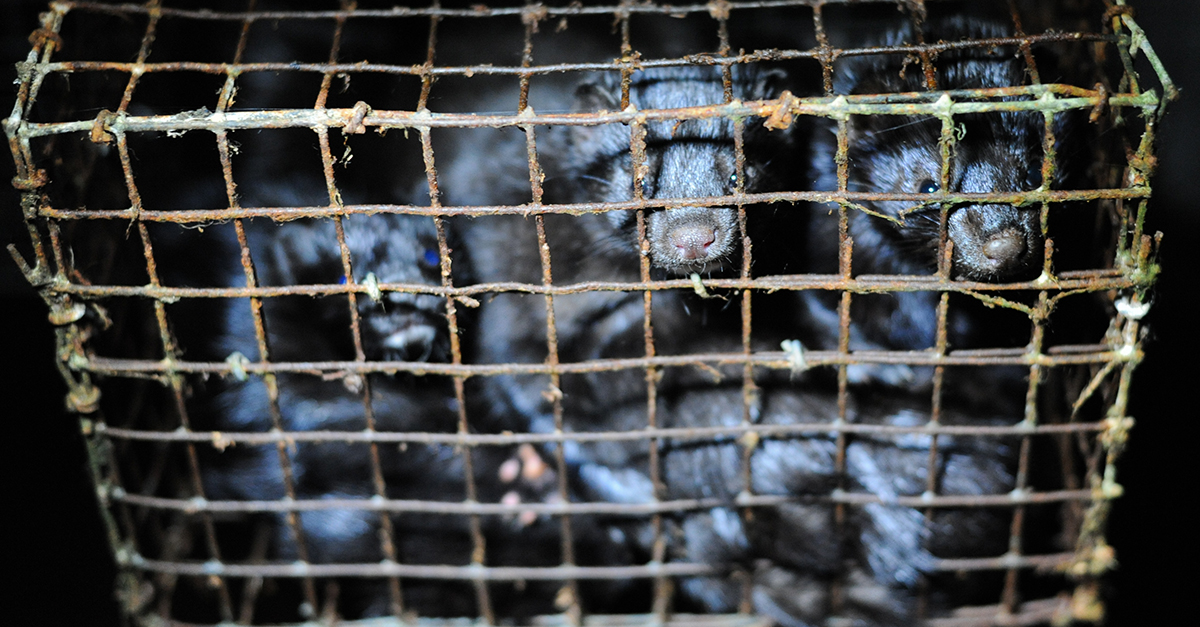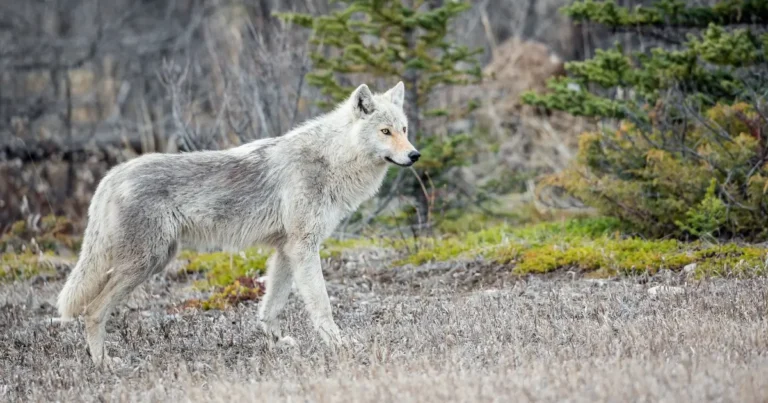
The fur industry likes to use terms like humane and well-regulated when talking about industrialized fur farms. And, from the outside, it’s believable: all you can see from the road or aerial photographs are long, orderly rows of sheds. But inside those sheds is a living nightmare.
Mink, the species most commonly bred and killed in Canadian fur farms, prefer to live in solitude in nature, hunting for their food and diving in open water regularly. On a fur farm, hundreds or thousands of mink live in small cages, roughly the size of two pieces of paper placed together, lined up against each other, with no access to water except small bowls from which they can drink. Their food comes in the form of a paste plopped on top of their cages.
Regardless of the species in the farm – mink, fox, raccoon dogs, or others – the conditions are designed not to keep the animals healthy and happy, but to ensure they produce a coat that’s marketable.
The fur industry will, from time to time, invite a camera crew or news team into a select farm to showcase how clean and humane their operations are. Of course, without the weeks of preparation and sanitizing that comes with the scheduling, camera crews tend to find something entirely different.
Across North America and Europe, animal protection groups obtain through various means an inside look at different farms. The problems range – from tragically obese foxes in Finland, to self-mutilating mink in Canada. But the cause is typically the same: keeping intelligent, feeling animals in small cages, solely to kill them and sell their skin as a commodity.
The footage obtained by The Fur-Bearers in 2014 showed systemic problems, if not intentionally cruel, then inhumane through apparent neglect. Due to a lack of laws related to fur-bearing animals in confinement, our complaints hit a wall.
In short, are fur farms humane? No. Are they well regulated? Only if you dismiss the facts that inspections in Canada only happen with weeks or months of advanced notice, the ongoing failures of the fur industry to police itself, and total lack of meaningful legislation to protect the animals.
If you want to stop this cruelty and help to Make Fur History you can – just say no to fur. Talk to your friends, family, neighbours, and tell them why you’re going fur free, and how easy it is for them to do so, too. We have numerous facts, blogs, photos, and videos that highlight the cruelty and counter the common fur industry spin at TheFurBearers.com and MakeFurHistory.com. A donation to The Fur-Bearers will also help us continue to meet with political leaders on issues like fur farm codes and our demand for a Fur Labelling Act, provide humane education, and support advocates across the country. Get involved at TheFurBearers.com/donate.
